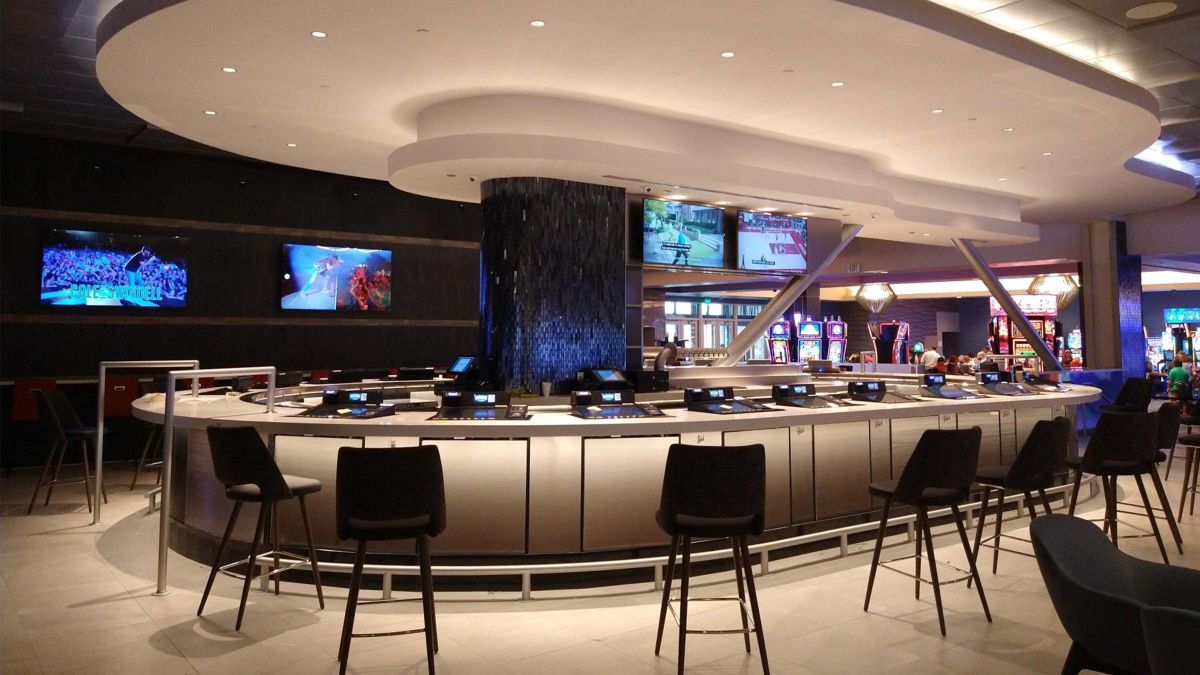Room combining, like so many other applications that benefitted from the evolution of AV, used to be a plug-and-play proposition. One-to-one connections became 8x8, with greater numbers of inputs-to-outputs possible as matrix switching dominated the frame. Now, sending AV signals over an internet protocol (AV-over-IP), is completing the AV industry’s transition to a fully flexible, fully digital format.
“I think that the market is disappearing for large, mainframe matrix switchers,” said Michael DiBella, director of commercial product marketing at Crestron. “There'll always be a need in niche markets—government comes to mind, certain agencies that want to have a completely closed ecosystem. There is a migration away from that for AV-over-IP.”
Event Space Renovation
Dennis Pappenfus, CEO of AV integration firm Fluid Sound, has intimate knowledge of the challenges facing multi-room venues. As part of a recent major renovation at Rolling Hills Casino and Resort in Corning, CA, Fluid Sound designed and implemented an AVoIP system in a new, 5,720-square-foot event, meeting, and conference space where ease of use was a major selling point.

“Globally, the entire casino can do things on a schedule, or the management can do things on a schedule,” said Pappenfus, “but the pit boss or the bartenders at certain areas can have control over just the screens that are relevant to their area of responsibility.”
[Is AVoIP at a Tipping Point? One Man's Opinion]
The network-based system uses a modular approach to video distribution, pairing every screen with a simple, compact VBS-HDIP-508POE or VBS-HDIP-518AVP receiver from Just Add Power that mounts onto the back of the screen and every source with a transmitter. The system not only offers ultra-low latency from source to screen and instant switching between any resolution HDMI source, but eliminates expensive cable runs from all the screens back to a main headend.
“Audiovisual is no longer an afterthought system—it's a mission-critical system.”
Dennis Pappenfus, Fluid Sound
Using Crestron TSW-570-X-S wall mount touch screens, casino staffers are able to select and distribute media from a range of video sources—including DirecTV receivers and BrightSign digital signage media players housed in four network IDF closets—to 60 displays and two video walls. “We sent those sources to all of the various video endpoints, displays, projectors and video walls using an IP backbone,” said Pappenfus, “but we used a fairly large Cisco switch backend as the trunk to distribute those sources to the different IDF closets."
The 40 GB trunk forms the backbone of the AV system, connecting all three IDF closets with the output side of the system, which supports a space that can be divided into up to five separate meeting rooms. Pappenfus said they were able to bring in all the casino sources into the meeting room screens. In the past, adding access to dozens of sources would require a large matrix switcher, but the hardware is greatly reduced with AVoIP.

The event center’s flexibility owes much to its AVoIP system. “They can walk over to either one of the on-wall wired touch screens or use the management touch interface and say, ‘Hey, I want to see the Super Bowl on these two 165-inch projection screens,’” Pappenfus explained. “Now they've just transitioned the available use cases for that room from meetings with presentations to portable bars and another type of revenue center. Just Add Power’s fully fleshed out API allows for the programming process to be smooth and seamless while making it just as simple for casino staff to operate.”
[AVoIP Standards: The Fight to Get It Right]
Another benefit of the Just Add Power system is the ability to use the receiver to control the display, both with serial control and CEC-over-HDMI control. “Casinos tend to look at displays as a napkin—a disposable commodity that they’ll use until it needs to be replaced, which is fairly quickly considering they’re on all the time,” said Pappenfus. “So, you’ll find a mix of higher end commercial displays and value displays. Just Add Power allows all the displays to be controlled in the same manner.”
Congestion Concerns
The biggest challenge in executing the Rolling Hills center, as well as many other multi-room AVoIP arrangements, was securing access to internet bandwidth that can support such an installation. And it’s not just Rolling Hills—bandwidth is an industry-wide concern. “We're seeing more devices come in, which is more traffic, an explosion of video conferencing,” DiBella said. “And this is just a massive, massive load on a network.”

“Bandwidth is huge now when it comes to doing video,” said Michael Lindo, AV systems engineer at IVCi. “Trying to do maximum resolutions for everything [is] massively bandwidth intensive on the switch. We see video ports in a system with 58 encoders and multiple switches ganged together, and you see how easily [you can] run into bandwidth problems.”
[AV-over-IP for Enterprise Organizations]
The explosion of new devices going onto networks, although slowed in some settings due to the COVID-19 pandemic, is adding more strain to the bandwidth challenge. With 8K screen resolutions on the horizon, DiBella sees accommodating that added draw on bandwidth as an obstacle to AV installations. Memories of the push to upgrade installations to 4K screens are fresh in his mind.
“[With 4K], everybody raced to upgrade their infrastructure, but then there was no content,” said DiBella. “So, early on in the market, people spent a lot of money to upscale. And that's really all that was happening.”

During that pre-pandemic period, corporate huddle rooms were the hot trend in AV, and the industry rushed to meet the challenge of bringing clients into the state of the art. “You had that market shift, so you had this idea of, ‘I’ve got to build 500 huddle spaces that look the same and put in these 4K displays,’” DiBella said. “And what we realized is you probably don't need 4K in a 10x10 room on a 42-inch screen just to show a spreadsheet.”
The potential for 8K, DiBella argued, is primarily in video walls and command-and-control environments where end users can fully appreciate the technology. “Video walls in general, and signage in general, have exploded within corporate America, where it was always dabbled with in lobbies,” he said. “And now it's really a prominent way to brand and communicate and also to create an experience inside the office.”
Directing Traffic
In a venue like Rolling Hills with ample bandwidth, that content could sail through the network without impediment. “If you're just sending direct TV video across the network to a couple of 55-inch screens, do you really need to send 4K?” Pappenfus asked. “Maybe, maybe not. But if you're sending video to a giant 4K, $500,000 video wall in the middle of a casino floor—well, you want to make sure that source content is high resolution and looks amazing.”
Another crucial element, Pappenfus said, is making sure all stakeholders—that means IT, too—understand what putting audio and video traffic on the network backbone will mean for other critical traffic moving through the system.
“It's necessary to have a technically proficient team in the IT space if you're going to be an AV contractor doing anything of significance in terms of size or integration into a client's network backbone in the AV-over-IP space. An adept IT team at a client site can partition off if they've got a sufficient-size backbone,” he noted. “Let's say that we're going to go to a conference room at the other end of the campus, or one display point in a lounge. We can tell them that this bandwidth is never going to be more than a gig.”
In the end user’s universe, regardless of the I/O or the bandwidth needed to accommodate the network traffic added by AV, ease of use is still paramount. “Audiovisual is no longer an afterthought system—it's a mission-critical system,” Pappenfus said. “Where the rubber meets the road in user experience is what's on the screen and what they're selecting with their finger. And if that's not just stupid-easy and very intuitive, that's where we see issues.”













